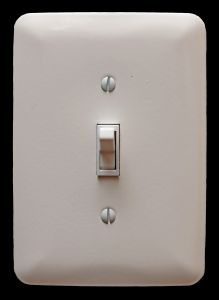Some advice to anyone who is thinking of signing a contract with an energy retailer in order to receive a discount on their bills – be sceptical, read the fine print, and do the maths. And if you have solar PV, like I do, the story below will be especially pertinent.
Like 240,000 or so other households around Australia, I eagerly awaited the One Big Switch energy discount which arrived in my inbox a couple of weeks ago. I have been with Energy Australia for as long as I can remember, but after getting my second 20 per cent price increase in succession I decided it was about time I looked for a better deal on electricity.
Add to the mix the fact that I have solar PV, which I installed almost two years ago when the NSW government was offering their generous 60c feed-in tariff. However, as this is a GROSS tariff, I am still fully exposed to the retail electricity price rises that are now in full swing.
Thinking that One Big Switch had taken my circumstances into account and negotiated the best deal for me, I was very disappointed to discover that their recommended TruEnergy offer, with a headline 17 per cent discount off my electricity usage, actually turned out to be the worst of all the offers that I have now sourced.
The key to figuring this out was reading the fine print which states:
“The 17 per cent pay on time electricity discount is calculated on the net usage and service charges for the billing period. This discount is applied after the solar credits.”
As my solar credit roughly offsets my electricity charges, TruEnergy is effectively offering me 17 per cent off zero! Considering that AGL is offering me 7 per cent off my gross usage (i.e. before deducting my solar credit) plus an additional 8c on my solar tariff, were I to switch to TruEnergy I would be over $500 per year worse off than the AGL offer.
This week Media Watch dedicated over 8 minutes to critiquing the One Big Switch offer by asking “16.5 per cent off what?” – and concluded that for a typical household the real discount could be as low as 11 per cent.
But things are slightly more complicated when you have solar PV, and I recommend you stay focused on the dollars and not the headline percentage discount. Perhaps most importantly, don’t fall into the trap of thinking that someone else is looking out for your best interests.
If you are interested, you can access the spreadsheet that I created to analyse the various offers here.







